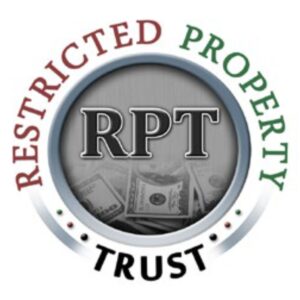Maximizing Security: How Restricted Property Trusts Safeguard Your Assets
Maximizing Security: How Restricted Property Trusts Safeguard Your Assets
Blog Article

In today's complex financial landscape protecting your assets from threats is more crucial than ever. Restricted Property Trust have become an effective tool for those looking to protect their wealth while meeting objectives in financial planning.
Understanding Restricted Property Trusts
Restricted Property Trusts are specialized financial instruments that are designed to provide the highest level of security for assets. When you transfer investments or property into an RPT, investors can shield their wealth from various risks, including lawsuits, creditors actions as well as other financial risks. The most important feature of an RPT is the ability to place restrictions on how the assets can be handled, used or distributed, thereby providing an additional level of security.
Effective Uses of Restricted Property Trusts
1. Protecting against creditors A major benefits of an RPT is the ability to shield your assets from being harmed by creditors. When assets are placed into an RPT, they're separated from the individual's personal estate. This separation implies that should there be any financial or legal dispute, the assets within the trust are generally shielded from seizure or liquidation.
2. Estate Planning and Legacy Conservation: RPTs play a significant function in estate planning by facilitating the controlled transfers of wealth. They make sure that wealth is distributed in accordance with the wishes of the person as well as reducing potential conflicts among the heirs, and also reducing estate taxes. The structured nature of an RPT allows for precise planning, aligning with long-term objectives and concerns about legacy.
3. The efficiency of taxation Restricted property trusts may offer potential tax benefits, dependent on their structure and the jurisdiction they are located in. For instance, certain RPTs could be eligible for favorable tax treatment which includes tax deferral or reduction. This could improve the overall efficiency of your financial plan and also provide benefits for the management of assets.
4. Controlling Assets By establishing specific restrictions on how assets in the RPT are used and controlled, you can maintain control over their management and distribution. This can be particularly useful to ensure that assets are used in a manner that is compatible the financial objectives and your personal beliefs.
Implementing a Restricted Property Trust
Setting up an RPT involves careful preparation and consultation with legal and financial experts. The process includes drafting the trust agreement, deciding on the trustee, and setting the restrictions and terms which will govern the trust. It is crucial to customize the RPT to your individual requirements and goals, making sure that it provides the desired degree of security and flexibility.
Potential Considerations
While RPTs have many advantages however, they do come with certain issues. Setting up and maintaining an RPT may be complex and may involve higher costs compared to other methods of asset protection. It is crucial to consider the administrative requirements and legal implications prior to committing to this method. Consulting with knowledgeable advisors will assist in navigating these issues and ensure that trust is effectively managed.
Conclusion
Restricted Property Trusts provide a effective solution for protecting assets and enhancing the security of your finances. Utilizing the strategic benefits of RPTs they can help individuals protect their wealth from possible threats, enhance their estate planning and achieve the long-term goals of financial planning. If you're looking to secure their assets and understand the complexities of wealth management exploring the utilization of Restricted Property Trust (RPTs) is a crucial step towards achieving lasting financial stability. Report this page